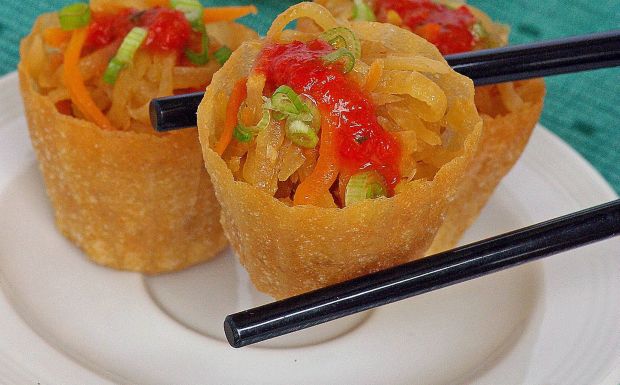
1) Can one add a little bit of water in cake batter to make the cake more moist?
No. It seems counterintuitive, but a lot of the ‘moist-ness’ that you perceive when you’re eating a cake is because of the fat and sugar content, as opposed to the liquid content. Try switching out to a recipe with a higher ratio of fat in it. Look for ingredients like fruit (think bananas in a banana cake) and buttermilk as they make for a more moist crumb. Besides the ratio of ingredients, the mixing method affects the structure of the cake and thus, its texture and mouthfeel. The ‘blended method’, which often uses oil as the fat, tends to result in a more moist cake.
(Moist cake)

2) What is the difference between cake flour and superfine flour?
Both cake flour and superfine flour are low protein flours that are great for products like cakes and shortcrust pastry. Superfine flour is, as you would guess, milled to a very fine texture and is often highly sifted. Different brands and manufacturers will have different names for their products, but you can use these flours interchangeably as they have similar properties.

3) How do you know you’re over-kneading or over-mixing? What are the signs?
Overworking a product can do several things: it might change or damage how the proteins develop, it might knock the air out of a mixture. Detecting an overworked mixture depends largely on the type of product you’re making.
Bread dough tends to become really stiff and difficult to stretch and shape. They’ll feel dense. The result will be a hard, compact loaf. It takes quite a bit of elbow grease to over-knead bread dough if you’re kneading by hand.
Over-mixing any sort of cake, muffin or loaf mix will result, again, in a dense, sometimes chewy or gummy product. It is quite easy to overmix this type of batter and it takes practice and a careful reading of instructions to know what the right mixing utensil to use is and to get the technique down.

4) What is the use of baking powder and baking soda?
Both baking powder and baking soda function as leaveners. Meaning, they add air bubbles to products. They are ‘chemical leaveners’ which introduce air bubbles through a chemical reaction with other ingredients, as opposed to physical leaveners (think whisking) or biological leaveners (like yeast).

5) I’m scared to bake because I tend to fail each time. Any words of advice?

The next thing I might suggest (at the risk of sounding cliché) is to not view them as failures, but as little experiments. With some creativity and playfulness, you can turn a lot of baking ‘failures’ into some dessert or other – trifles, parfaits and layered desserts like that are a fun way of using less-than-optimal baked goods. They’re forgiving and delicious. Also a great way to use up leftover creams, frostings, fruit and other bits you have in the fridge or pantry.
Before upcycling your ‘experiment’, troubleshoot what it is about it that didn’t turn out as you had hoped, do some research as to why that might have been the case and make small adjustments as you go. Keep notes and take pictures to track how you get on!





